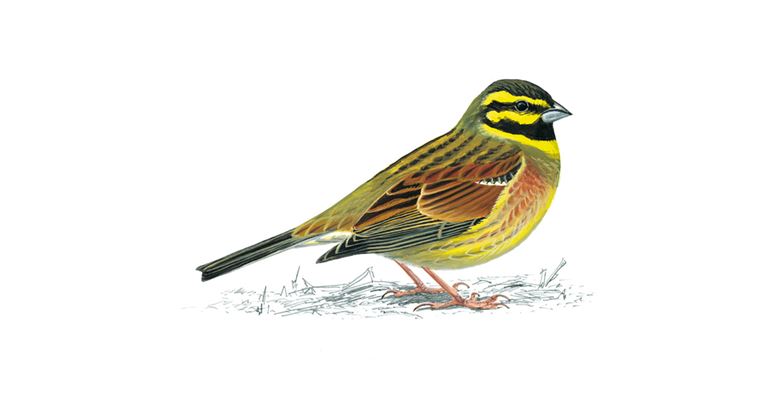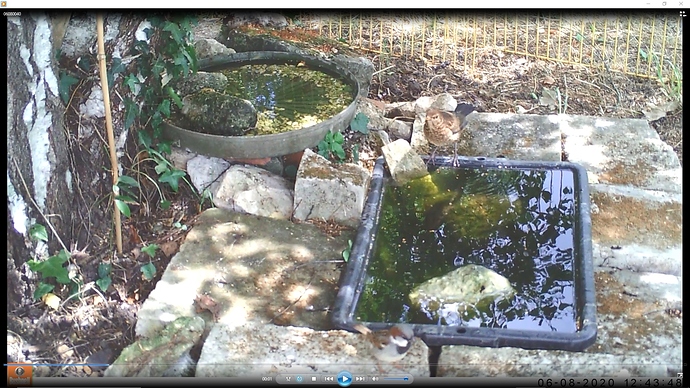Well that’s a relief Alex. I had visions of Bruce being invaded with twitchers in their hundreds ![]()
By the way Bruce, did you get confirmation from the RSPB that it was a Melodious Warbler?
Haven’t heard yet from RSPB Sue about the Melodious Bunting.
Alex, you might be right about it being a Cirl Bunting, however the RSPB shows it as having quite marked yellow markings as seen here…
However, if you look at my latest video, 10 second clip - https://www.youtube.com/watch?v=RRMa59EXW7w - you will hear a short song just before my Cirl or Cape Bunting appears, and this song is the same as the Cirl Bunting’s song on the RSPB’s web site here - https://www.rspb.org.uk/birds-and-wildlife/wildlife-guides/bird-a-z/cirl-bunting/
It could be that the yellow markings are of a mature breeding male, and that mine is immature?
The song might clinch it but I’m confused about the yellow colouring. What else might clinch it? The Cape Bunting is an exclusive resident of South Africa and doesn’t migrate.
I shall send my videos to the RSPB and await their vedict!
Ahah! The reason I haven’t heard from the RSPB Sue is that I just found my email in the ‘drafts’ folder - not sent!
Just sent email to RSPB for both birds, the Melodious Warbler and the Cape or Cirl Warbler, and received an immediate reply! RSPB staff are all working from home and have a large influx of emails waiting to be answered, due to the coronavirus.
Will report back as soon as I get a reply!
I have had one just like it my own garden recently:
Nature always seems to be one step ahead of me. I see that the sun is at last shining and then see that blackbirds have mated, nested and have raised their young!
Only realised that today from my daily garden cam video footage. Two healthy confident young blackbirds at the bird bath - https://www.youtube.com/watch?v=Ow-VQj81v-g
Incidentally you can hear a Cirl Bunting (!) in the background.
Nb. I did notice Dad following very close behind me in weeks gone by, unafraid and picking up disturbed insects as I meandered around mowing the grass. He was no doubt feeding his young. Glad I could help!
There’s an app for that in the Google Play catalogue : It’s a reverse dictionary : -You upload a photo or a graphic, -they compare it with the content of a bigdata images bank, -they then download to you id data of what - in form and/or color - is most aproaching shape and color of your sent material .
[ A simiesque system might also exist … for sound. ]
Please search for this app !
\
Same reverse dictionary pattern exists for plants ( VEG world ), distributed by same Google .
Reverse image search  it has been around for a bit I think.
it has been around for a bit I think.
Yes, @Véronique Langlands , and I have never found time to download these apps and experienced ( used ) them. Have you ?
I use reverse search online (I am not interested in downloading an app) mainly because I want to see where illustrations in peoples’s presentations have come from (another little weapon in the fight against plagiarism) or I want to find several examples of something particular.
New bird! Think this one is a juvenile greater spotted woodpecker trying to have a bath!
My bird bath camera has been recording here for a couple of years and this is only the 2nd woodpecker caught on film, the 1st being an adult green woodpecker having a drink last summer.
How did the subject of reverse searches get introduced on bird ID?
My wife does the same when checking through students homework - some of the students are pretty bad at crediting the sources of their “inspiration”.
I always find it confusing trying to determine whether male juveniles are GSW or LSW. The GSW juvenile males have red crowns (the red moving to the nape when adult), but also a red patch under the rump, whereas the LSW also have a red crown, but no red patch under the rump. Size comparison to a reference bird might be helpful here !
EDIT : the white shoulder bars would indeed indicate a GSW.
It looks to be bigger than a male sparrow but smaller than a juvenile black bird Alex. It does look like a smallish bird, smaller than a GSW juvenile perhaps, which means it could be a LSW juvenile.
I’ll keep an eye open for it in future sightings.
Male sparrow.
Juvenile blackbird.
Maybe a juvenile LWS.
Nope, I’m wrong! You said it had a white shoulder bar Alex, so it would appear to be a juvenile GSW. Had another look at my old guide to European birds. I think you are right.
You’ll just have to wait until it grows up 
I’ve had a reply from the RSPB and here it is Sue - quote…
Dear Bruce,
Many thanks for your email, photos and recording.
I have to say I am very grateful for the sound recording as well. When I looked at the photos I thought it didn’t look like a Willow Warbler but was beginning to struggle to identify just which warbler it might be; then I listened to the song. I have no experience of Melodious Warbler first-hand but I compared your song recording to that of recordings on Xeno-Canto (a fantastic website if you’re not familiar) and I found what is an extremely close match (also recorded in France) here: https://www.xeno-canto.org/565059 . The bird also has a pale bil which is significant - it would be useful to be able to see the wing of the bird to check the length of the primaries (but given this was on a TV aerial that would be a tall order). Therefore I think on balance it would be fair to say this probably is a Melodious Warbler (Hippolais polyglotta).
I hope this helps,
Mac (Bird ID Volunteer)
I listened to the recording on https://www.xeno-canto.org/565059 and can say that it is indeed the same song of my little TV aerial friend.
It’s raining and is grey & miserable here but even with all windows closed I can hear him singing away!
No, not a Goldcrest, a sparrow is twice the size! A warbler is a good spot but not sure which - so many of them.
Thanks Bruce for posting the RSPB answer. And good to have another website to be able to check - I just love the internet at times like this. Bird books are great but having the flight/movement and the sound as well makes all the difference because so often those are the first things we can see. In my garden we have many many SBBs (small brown birds!) 
Well done Lyn @Monbazillac1 for recognising the melodious warbler.




